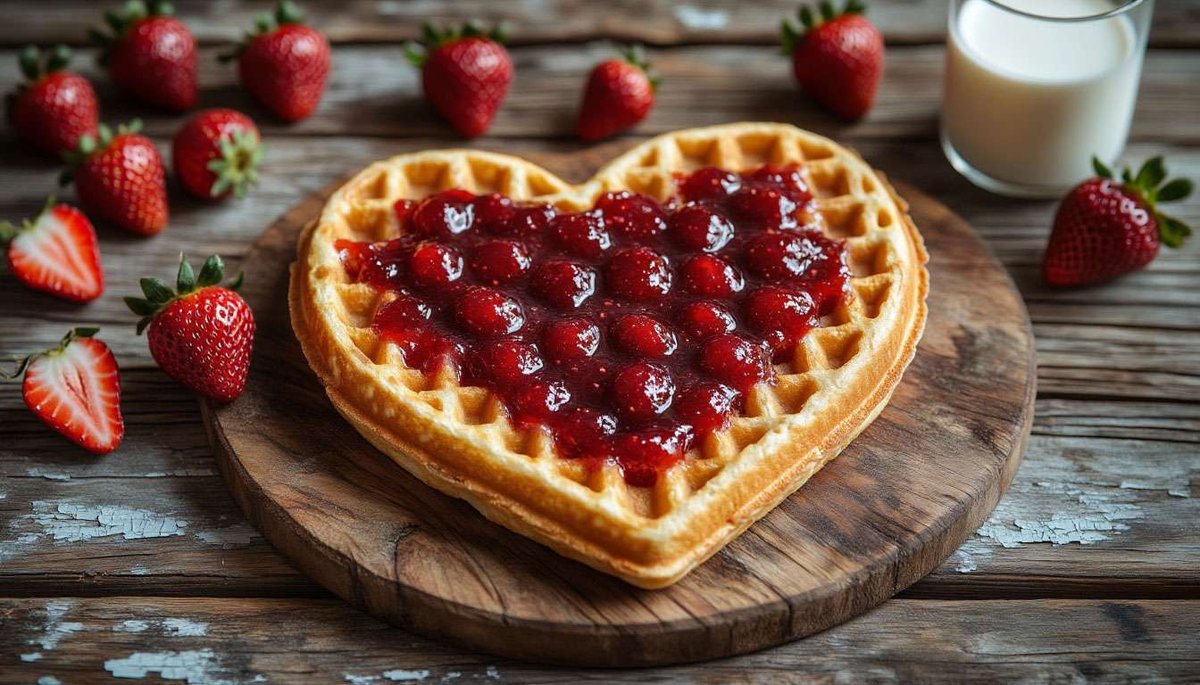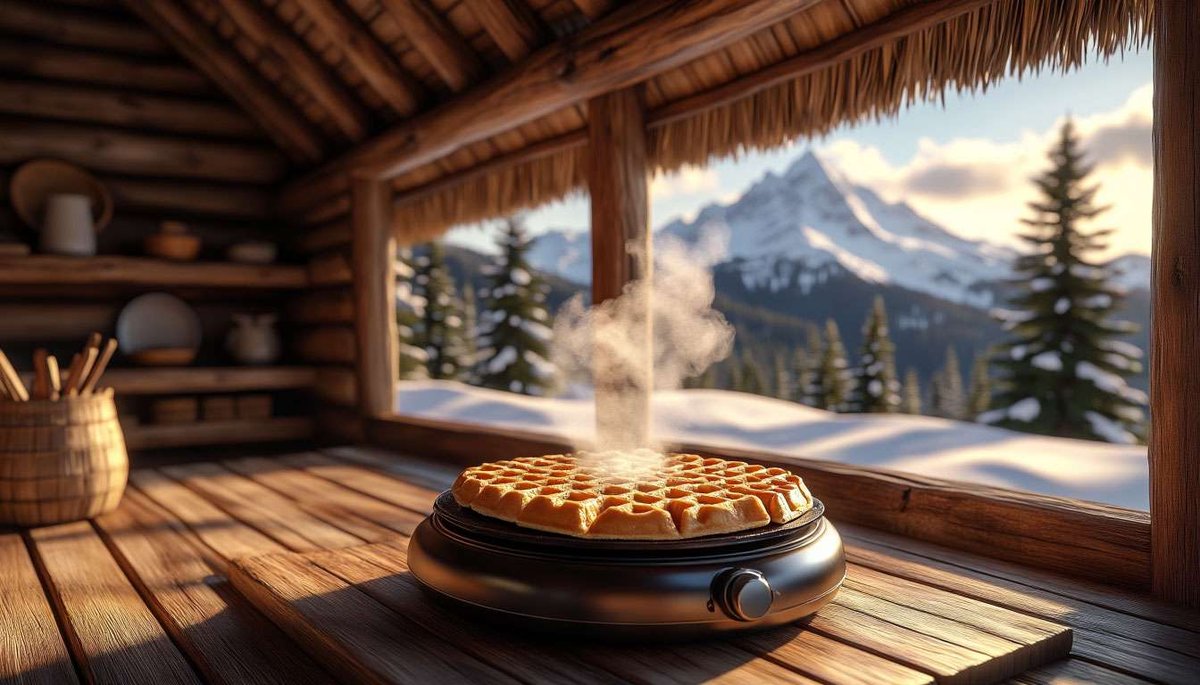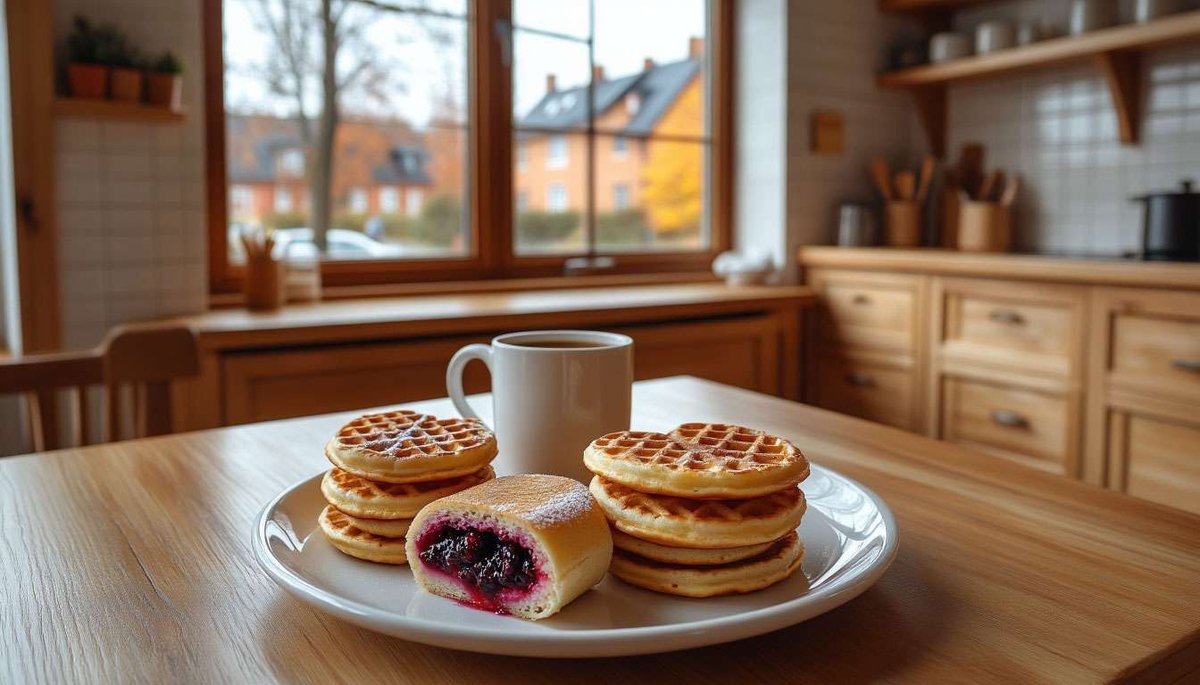Heart on a plate: Norwegian waffles Vafler and thin pancakes Pannekaker — favourite coffee break treats

In Norway, the aroma of fresh waffles signals that it's time for kaffepause: whether in the office, at a ski resort or in a tourist hostel, you'll always find an electric waffle iron with heart-shaped moulds. Next to it is a jar of jam, brown Brunost cheese and sour cream. Another symbol of home comfort is thin Norwegian pancakes called pannekaker, which are rolled up with berries or ice cream. Let's find out where these desserts came from, how to make them and where to find the perfect serving of sweet hygge.
Why are Norwegian waffles heart-shaped and how do they differ from Belgian waffles?
The shape comes from a cast iron waffle iron from the 19th century: five small diamonds together formed a flower, but housewives saw hearts in it, a symbol of domestic warmth. The dough is made with sour milk (kulturmelk) and cardamom; it is more liquid than Belgian dough and contains less sugar. They are baked at 180–190°C: the waffles are thin, soft and flexible — they can be folded, spread with brönost and rolled up.
What toppings are considered classic for Vafler?
- Brunost + strawberry jam — a balance of sweet caramel and berry acidity.
- Rømme + cloudberry jam — a dessert from the northern regions.
- Cream cheese + smoked salmon — a savoury interpretation for an appetiser.
- Heather honey + chopped nuts — a New Nordic trend.
What are "kabinvafler" and where can I try them?
Kabinvafler are waffles baked in mountain tourist huts (turisthytte) and ski cafés. The best places to try them are Frognerseteren Kafé (Oslo) with a view of the fjord and Vaffelbua Skåla on the way to the Romsdalseggen pass. The secret to the recipe is adding 10% oat flakes for heartiness and a pinch of cinnamon for a hint of cold air.

How do pannekaker differ from French crepes and how are they served by Norwegians?
Pannekaker are slightly thicker and more elastic than crepes: for 500 ml of milk, take 250 g of flour, 3 eggs and a tablespoon of sugar. Vanilla and sometimes cardamom are added to the batter. They are usually served rolled up with strawberry jam, cinnamon sugar or a scoop of vanilla ice cream. On weekdays, they are fried for dinner — "pancake day" (usually Thursday) makes family cooking easier.
How to bake perfect Vafler and Pannekaker at home?
Vafler: 400 ml kulturmelk, 100 ml milk, 2 eggs, 75 g sugar, 300 g flour, 1 tsp baking soda, 1 tsp cardamom, 75 g melted butter. Mix, let stand for 20 minutes, bake for 2 minutes until golden brown.
Pannekaker: 500 ml milk, 3 eggs, 250 g flour, a pinch of salt, 30 g sugar, 2 tablespoons melted butter. Leave the batter to rest for 15 minutes, fry in a 24 cm frying pan; turn over when the top is set.

Where can you find the best waffles and pancakes in Norway's largest cities?
- Oslo: Vaffel Kaffe (Youngstorget) — 12 types of toppings, including "waffle tacos".
- Bergen: Kaffemisjonen — waffles with filter coffee from their own roastery.
- Trondheim: Baklandet Skydsstation — classic Pannekaker with lingonberry jam.
- Tromsø: Riso mat & kaffebar — buckwheat waffles for a gluten-free diet.
Waffles and pancakes are an edible metaphor for Norwegian cosiness: crispy in the cold, warming with sweetness and smelling of cardamom. Just melt a slice of Brunost on a warm Vafler heart and you'll forever remember the sound of the northern forest and the glimmer of the fjord in the rays of the polar sun. Grab a heart-shaped waffle iron, mix up some simple batter, and let the Norwegian kaffepause ring out in your home, where the main thing is to share warmth and fresh waffles.





2 comments
Log in to leave a comment